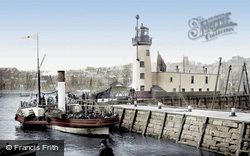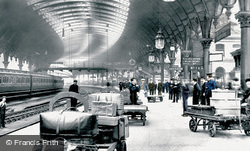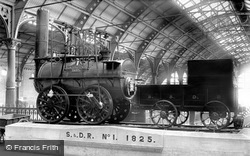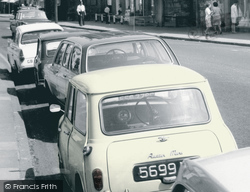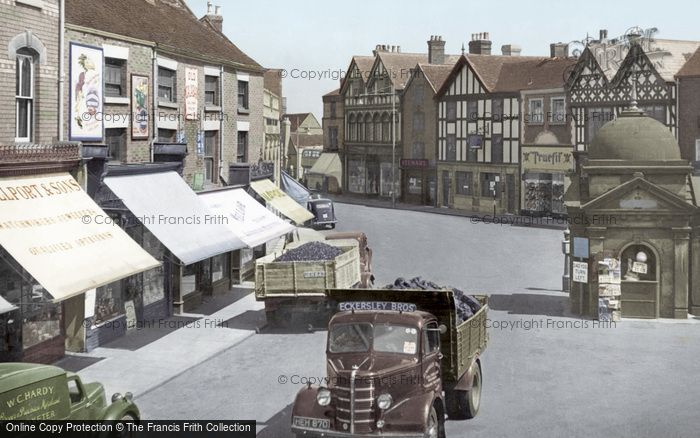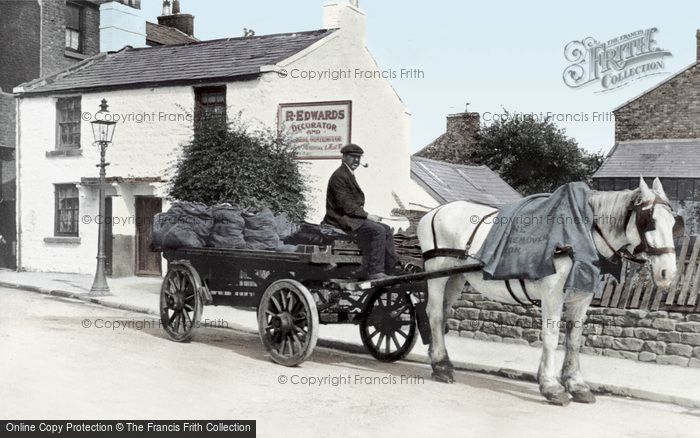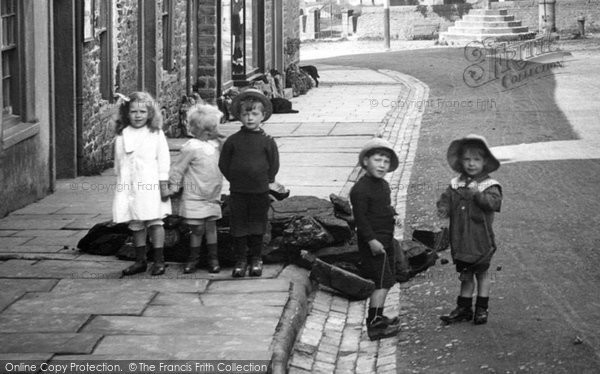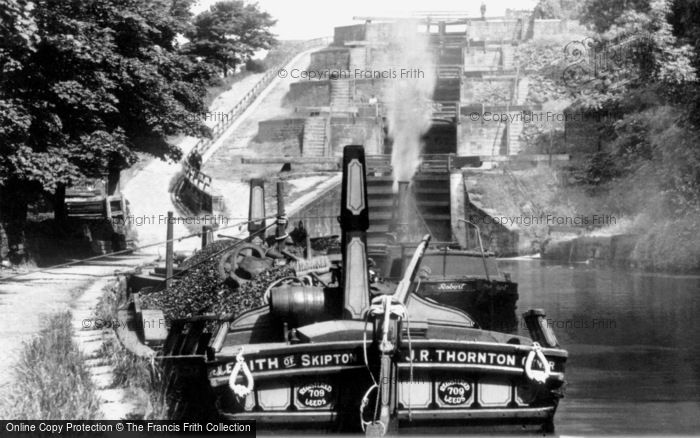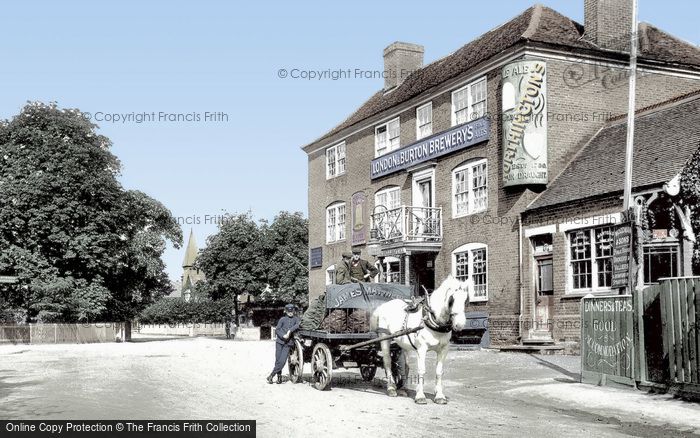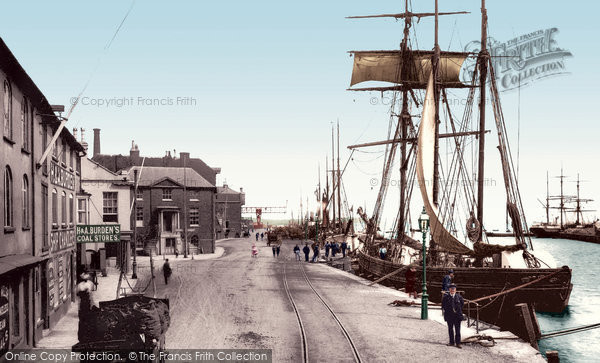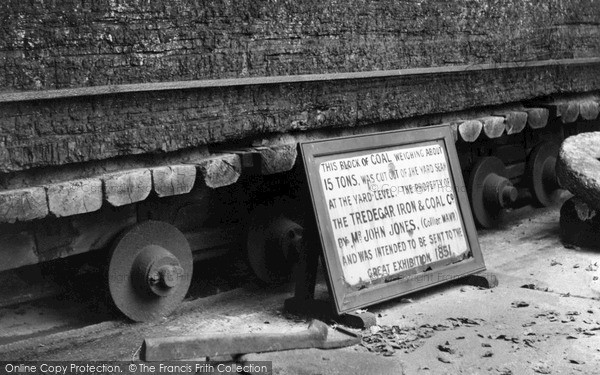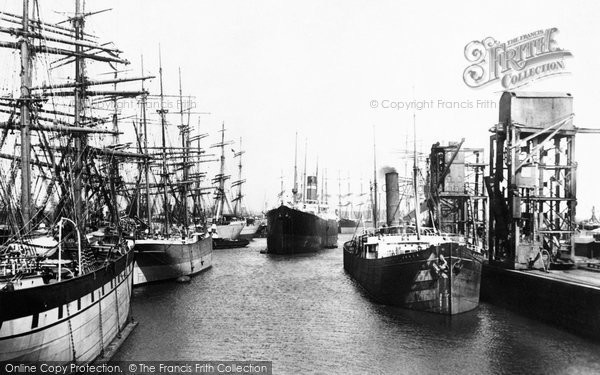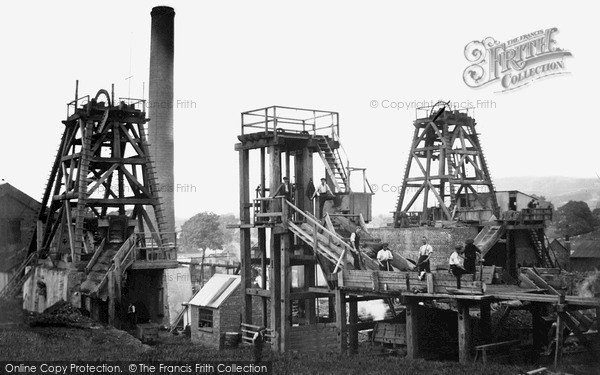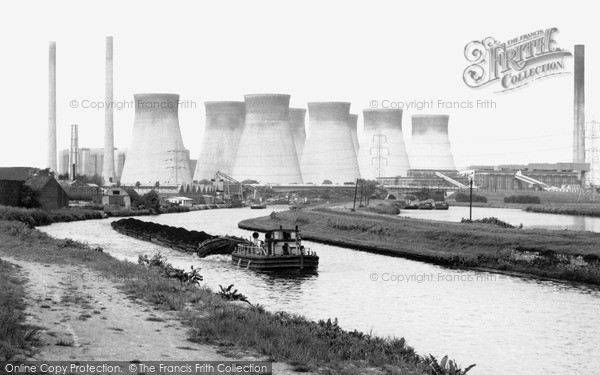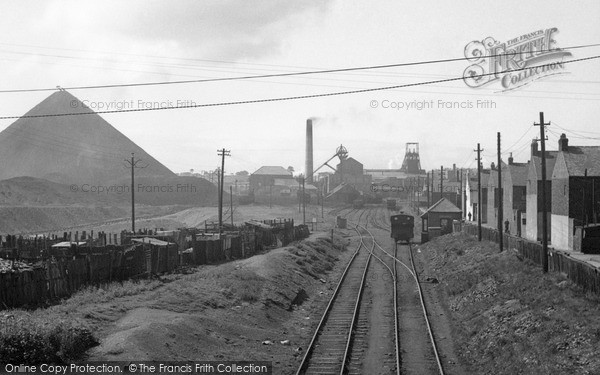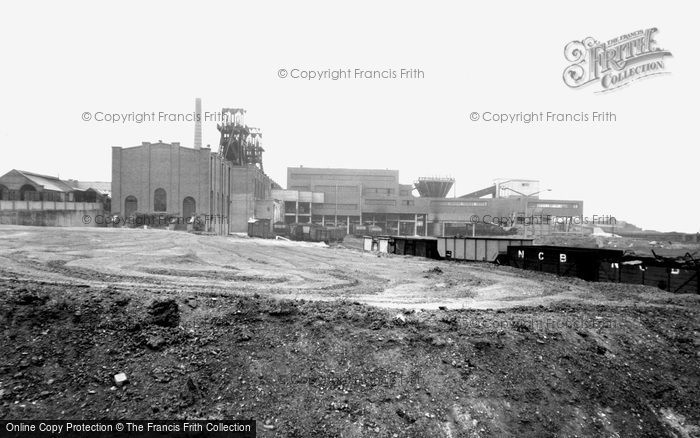Coal
Published on
December 5th, 2022
As the cold, dark nights of winter draw in, it’s time to tentatively turn up the heating or snuggle by the fire. This selection of nostalgic images from The Francis Frith Collection is based around the themes of 'coal', 'coalman' or 'coal mine' as a reminder of the fuel that most people used to heat their homes in the past.
This late Victorian scene is typical of many of the towns and villages in Britain at the time. A horse-drawn cart delivering coal in jute sacks stands outside the premises of R Edwards, decorator, while the coal-man sits on the empty coal sacks and sucks on his pipe while the photograph is taken. Notice the old gas light outside May Cottage.
Children stand beside a pile of coal that has just been delivered on to the pavement outside a house in Askrigg in Yorkshire.
A pair of Horsfield's craft are seen here carrying coal on the Bridgwater Canal in Cheshire with the once horse-drawn butty (the 'Marjorie') being towed by the motorised narrow boat. It was this canal, financed by the Duke of Bridgewater and built in 1761, which heralded the beginning of the Canal Age that brought about a complete change in the transportation of industrial materials, manufactured goods and coal, the material that fuelled Britain's Industrial Revolution of the 18th and 19th centuries.
This image shows a canal boat loaded with coal at the Five Rise Locks near Bingley in Yorkshire. The Five Rise locks form part of the Leeds & Liverpool Canal, and are one of the wonders of the waterway system. They are known as staircase locks, because the top gate of each chamber is also the bottom one of the next: there is no water between the two.
In 1908, one of James Matthews' coal delivery carts is posed in Corbets Tey Road outside the Bell Hotel, which was later demolished to allow the road junction to be widened.
In the past the old Quay at Poole in Dorset was busy with coal being landed at the Quay and unloaded into railway trucks which were pulled along the Quay by steam engines for about half a mile before joining the main railway line. The railway lines along Poole Quay were laid in 1874 but became redundant in 1960 and soon disappeared. A gantry used for unloading coal from the ships into the trucks can be seen in the distant background of this view. On the left of the picture is H & A Burden’s coal merchants' premises.
Tredegar is a former mining village in the Sirhowy valley of South Wales. This huge lump of coal, weighing about 15 tons, was cut by the expert collier Mr John Jones, an employee of the Tredegar Iron & Coal Co. It was a great feat to extract such a weight. The coal was intended to be sent to the Great Exhibition held in the Crystal Palace in London in 1851, but it was too heavy to move. It is now on display in Bedwellty Park in Tredegar, covered by a roof and with a pit cage alongside to commemorate Tredegar's coal-mining heritage. Tredegar's most famous son was the Labour Party politician Aneurin Bevin (1897-1960), who wrote of the coalminer's lot: 'In other trades, there are a thousand diversions to break the monotony of the work – the passing traffic, the morning newspaper, above all the sky, the sunshine and the rain. The miner has none of these. Every day for eight hours he dies, gives up a slice of his life and buries himself.'
This photograph of Blaengwynfi in the Upper Afan Valley of South Wales is a typical view of a Welsh coal mining village. Houses for the colliers were built around the pit which dominated their lives. The sound of the hooter at set times signalled the end of shifts, but when it sounded at an unusual time, it conveyed news of a pit accident.
The Barry Dock and Railways Company was formed in 1884 when Welsh colliery owners decided to open a new deep-water dock at Barry. No 1 Dock of what subsequently became the greatest coal shipping port in South Wales opened in 1889, equipped with nineteen coal hoists. Coal played a major role in British shipping for decades; the enormous demand for coal to fuel ships as well as industry meant it was exported not only to customers in other countries, but also to maintain stocks world-wide at the coaling stations of the Royal Navy and bunkering ports alike. This photograph shows steam and sailing vessels side by side in the dock. In the late 1890s one last stronghold of the big iron and square-rigged sailing ships was in the bulk cargo trade, where they could compete on operating costs and freight rates with steamships, but a few years later, seeing the advantages that steam gave over sail, shipowners began to dispose of sailing ships.
The coalfield around Ingleton in North Yorkshire was worked for 400 years and once supported twelve or more small collieries, but the last mine was closed in 1940. Most deep mining was at New Ingleton Pit, seen in this photograph, which was sunk in 1913 and closed in 1937.
In the past, coal was carried from Yorkshire coal mines down the Aire and Calder Navigation to the port at Goole in vessels called 'Tom Puddings', short containers that could be coupled together in any length and then towed by barges. When they reached the port of their destination, they were lifted with a hoist and turned upside down so that the coal could be emptied out - just like a pudding being turned out from a pudding bowl. A barge hauling coal loaded onto 'Tom Puddings' can be seen near the power station near Knottingley in this photograph.
When the mining industry was nationalised in 1947, there were 127 active pits in County Durham employing 108,000 mineworkers. Output of the combined Durham and Northumberland coalfield in 1951 was 39 million tonnes, with a productivity level of 259 tonnes per man per year.
At the time this photograph was taken, Easington was one of six large pits situated along the coast of County Durham; the others were Wearmouth, Vane Tempest, Dawdon, Seaham and Horden. Between them they employed over 10,000 men and extracted over 4 million tonnes of coal a year from seams stretching out under the North Sea. Easington closed in 1993.
This post has the following tags:
Nostalgia.
You may find more posts of interest within those tags.
Join the thousands who receive our regular doses of warming nostalgia!
Have our latest blog posts and archive news delivered directly to your
inbox.
Absolutely free. Unsubscribe anytime.



